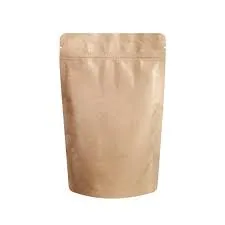grain packaging bags
Understanding Grain Packaging Bags Importance and Trends
In today's agrarian economy, grain packaging bags play a vital role in the storage, transportation, and marketing of various grains. The significance of these bags cannot be overstated, as they ensure that grains retain their quality and remain free from contamination, pests, and spoilage. This article delves into the importance of grain packaging bags, the various types available, and emerging trends in the industry.
Importance of Grain Packaging Bags
Grain packaging bags serve multiple purposes, making them essential in agricultural operations. Firstly, they protect grains from environmental factors such as moisture, humidity, and sunlight, which can drastically affect the quality of the product. For instance, excessive moisture may lead to mold growth, while direct sunlight can cause nutrient degradation. By using high-quality packaging, grain producers can ensure that their products remain fresh and suitable for consumption.
Secondly, these bags facilitate easy handling and transportation. Grains are often bulk commodities; thus, using durable and reliable packaging allows for efficient logistics and reduces losses during transit. This is particularly critical in international trade, where grains may be transported over long distances. Proper packaging not only ensures that the grains arrive in optimal condition but also maintains the integrity of the supply chain.
Types of Grain Packaging Bags
There are several types of grain packaging bags available in the market today, each designed to meet specific needs. The most common materials used for these bags include polypropylene, polyethylene, and paper.
1. PP Bags (Polypropylene Bags) These bags are known for their strength and durability. They are moisture-resistant and are often used for bulk grains such as rice, wheat, and maize. Due to their sturdiness, PP bags are a popular choice among grain processors.
2. PE Bags (Polyethylene Bags) These are typically used for smaller quantities of grains. PE bags are flexible and can be sealed easily, which helps in preventing air and moisture from entering. They are ideal for retail packaging.
grain packaging bags

3. Paper Bags While less common for bulk grains, paper bags are still popular for organic grains or specialty products. They are biodegradable, which appeals to environmentally-conscious consumers, and provide a rustic presentation.
4. Vacuum Pack Bags These bags provide an advanced level of protection by removing air and sealing the grains, thereby extending shelf life significantly. This method is increasingly gaining popularity in both retail and commercial sectors.
Emerging Trends in Grain Packaging
As consumer preferences evolve and sustainability becomes a crucial factor in purchasing decisions, the grain packaging industry has seen several noteworthy trends. One major trend is the shift towards eco-friendly packaging solutions. With the rising awareness about plastic pollution and its impact on the environment, many companies are opting for biodegradable and recyclable packaging materials. This not only appeals to environmentally-conscious consumers but also aligns with global sustainability goals.
Another trend is the incorporation of smart packaging technologies. These innovations include moisture indicators, oxygen absorbers, and even QR codes that provide consumers with information about the product's origin and storage requirements. Smart packaging enhances the consumer experience and helps assure quality, ultimately adding value to the product.
Lastly, the demand for customized packaging is on the rise. Companies are looking to differentiate their products, and tailored packaging solutions allow them to achieve that. Customized designs not only enhance brand visibility but also help in conveying essential information about the grain, such as its nutritional benefits and cooking instructions.
Conclusion
Grain packaging bags are more than just containers; they are essential components of the agricultural supply chain. As the industry continues to evolve with technological advancements and shifting consumer preferences, the importance of high-quality, sustainable packaging options will only grow. Producers and retailers must stay informed about materials and trends to effectively meet the demands of the market while ensuring quality and safety for consumers. Investing in the right grain packaging solutions is a step towards long-term success in the food industry.













